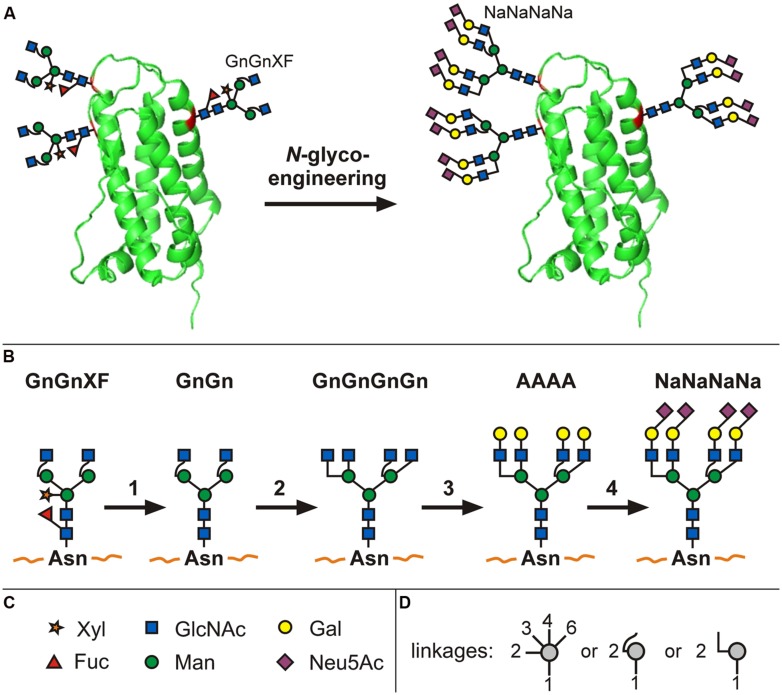FIGURE 1.
N-glycoengineering in plants to produce tetra-sialylated proteins. Schematic representation of an extensively glycoengineered plant-produced glycoprotein (erythropoietin; A). It represents the front of plant glycan engineering and illustrates, in short, the transformation of glycans present in Nicotiana benthamiana wild-type plants (GnGnXF) to finally obtain a glycosylation profile present on human serum EPO (NaNaNaNa). For such intensive N-glycoengineering, a series of individual steps are necessary (B; 1): knock-out or knock-down of plant-specific β1,2-XT and core α1,3-FT, (2) introduction of GnTIV and GnTV responsible for branching, (3) introduction of β1,4-GalT, (4) introduction of sialyltransferase in combination with the biosynthetic pathway to produce activated sialic acid (not shown). Symbols for monosaccharides are given in (C), symbols depicting which monosaccharide atoms are involved in the linkage are given in (D). For detailed description see publications by Castilho et al. (2010, 2011, 2012, 2013). A more detailed explanation of N-glycan nomenclature and graphical illustrations can be found at http://www.proglycan.com/upload/nomen_2007.pdf

